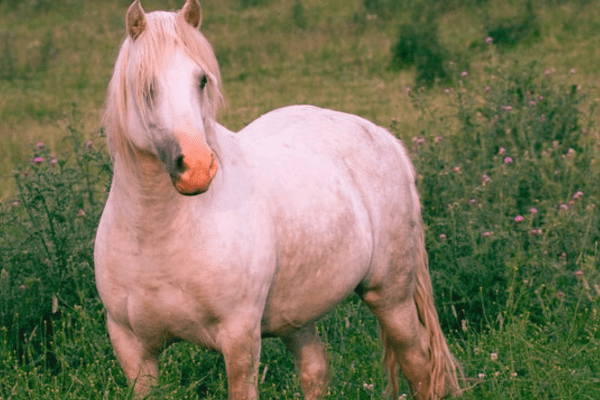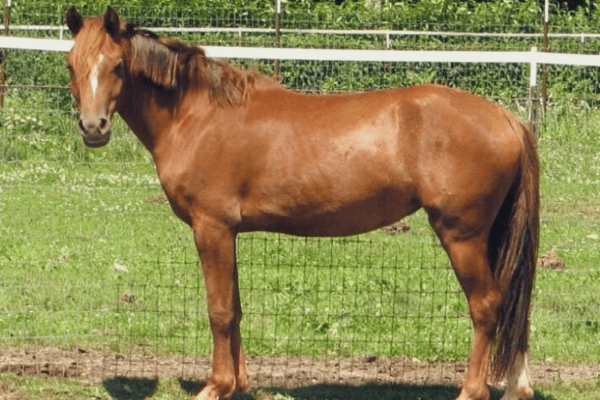The Welara Pony represents a distinctive fusion of Arabian elegance and Welsh resilience. Originating from a deliberate crossbreeding between the Welsh Pony and the Arabian horse, this relatively new breed is swiftly gaining recognition in various equestrian arenas. Celebrated for its vibrant energy and robust constitution, the Welara also endears itself to riders with its kind and amiable nature, making it a versatile choice for disciplines such as show jumping and pleasure riding.
Breed Characteristics:
The Welara Pony, a magnificent cross between an Arabian horse and Welsh Pony, stands as a testament to selective breeding’s merits, exuding grace and resilience while simultaneously honoring both of its noble roots: Arabian heritage as well as sturdy reliability from Wales Ponies. This breed’s characteristics demonstrate deep respect for both their heritages.
Below is an in-depth examination of the physical and functional attributes that define the Welara Pony:
Stature and Build
Establishment and Build Stallions: On average, Welara stallions average 14-15 hands in height (56-60 inches or 142-152 cm), embodying an elegant presence.
Mares: Mares tend to be smaller and more delicate in comparison, standing from 13.1-14.3 hands (53-59 inches, 135 to 150 cm).
Registration Standards: To be recognized officially, Welaras must meet a height criterion between 11.2 to 15 hands (46 to 60 inches, 117-152 cm).
Diverse Crossbreeding Outcomes
The Welsh Pony breed’s diversity can be traced to its lineage, broken into four sections (A, B, C and D) each contributing unique characteristics to its diversity:
Section A Crosses: Ideal for light driving and young children’s mounts, these ponies measure under 13 hands (52 inches or 132 cm).
Section B Crosses: Slightly taller ponies in this class range from 13-13.2 hands (52 to 54 inches, 132-137 cm). Ideal for larger children and small adults to drive and ride.
Section C Crosses: These ponies tend to be stronger horses, typically measuring 13.2- 14.2 hands (54 to 58 inches, 137-147 cm). Their feet may feature feathering but still maintain Arabian refinement.
Section D Crosses are the largest in this section, measuring 13.3-15 hands (55-60 inches, 140-152 cm). They are suitable for adult riders from various disciplines.
Color Palette and Registration
Horse offer an expansive variety of colors for purebred registration, while Appaloosa patterns offer some variation.
Welara Sport Ponies: This category allows greater scope in terms of color and size beyond purebred restrictions.
Physical Characteristics
The breed’s small, slightly concave head echoes its Arabian heritage.
Stallions typically have arched necks, making for an impressively distinct appearance.
Their bodies include long shoulders and croups as well as compact backs which combine strength with agility for superior performance.
Equestrian Roles
English Riding: The Welara excels at English riding, particularly hunter classes.
Versatility across Disciplines: They are popularly found in show jumping, three-day eventing, pleasure driving and as leisure riding horses.
Crossbreeding Thoroughbreds: Welara/Thoroughbred crosses are popular in hunter and jumper classes, highlighting the breed’s adaptability.

History:
WELARA PONY History is a captivating tapestry weaved together of Arabian elegance and Welsh resilience. From crossbreeding experiments to become one of the world’s premiere equine classes is truly remarkable tale.
Early 20th Century in Sussex, England
Crabbet Arabian Stud’s Role: Lady Wentworth was instrumental in initiating crossbreedings between Arabian stallions and Welsh mares during this era of breeding in England.
Welsh Mare Selection: Care was taken when selecting Welsh mares, particularly from Coed Coch stud farm in North Wales, so as to complement Arabian traits.
Mid-20th Century: Evolution and Recognition
These early equine crosses were never meant to produce new breeds; rather, their distinct qualities gradually gained recognition among horse enthusiasts.
Adoption by Other Breeders: Following these crosses’ success, other breeders in England and North America adopted similar breeding programs – further contributing to the breed’s evolution.
1981: Establishment of the American Welara Pony Registry
Formalizing the Breed: With the creation of the American Welara Pony Registry in 1981, an important step was taken toward formalizing and defining Welaras as distinct breeds.
Studbook and Pedigrees: The registry began publishing a studbook to carefully document pedigrees of purebred Welaras, setting standards, including specific bloodline requirements.
Early 21st Century: Expansion and Popularity
Registration Criteria: Purebred Welaras must possess a precise blend of Welsh and Arabian bloodlines, with each breed contributing between 1/8th to 7/8ths of their genetic lineage.
Growth in Registrations: By 2005, the registry had recorded over 1,500 ponies in North America with about 100 foals added each year.
Welara Sport Ponies
Incorporation of Other Bloodlines: The Welara Registry also recognizes Welara Sport Ponies, a variant containing at least 50% Welara blood while including other breeds – typically Thoroughbreds – such as Thoroughbreds.
Foundation Stock Registration: Additionally, this registry keeps records of pureblood Welsh and Arabian foundation stock.
Global Reaches:
Since its initial introduction, Welara Ponies have found homes across multiple regions – Caribbean, Oceania and Europe among them.
European and American Presence: Welsh/Arabian crosses are more prevalent across Europe as “riding ponies” or “sport ponies,” while in America their presence can be found predominantly in central and western regions, demonstrating their versatility.
Breeding and Conservation:
Breeders of Welara Ponies prioritize maintaining the qualities and characteristics of both parent breeds by adhering to stringent breeding standards that ensure health, temperament and abilities in their offspring. As this breed is relatively new, efforts are ongoing to expand numbers while still protecting genetic diversity and maintaining genetic quality.
Modern Times for Welara:
Today, Welara Ponies remain increasingly popular due to their beauty, versatility, and suitability for multiple riders. Celebrated at pony clubs, shows, equestrian sports events and by families and individuals who appreciate their gentle temperaments and adaptability.
Conclusion The Welara Pony stands as a testament to successful crossbreeding, offering all of the desirable traits found in an Arabian and Welsh pony breeds. Its increasing popularity can be attributed to its versatile, beauty, and endearing temperament that have cemented its place as one of the equestrian world’s beloved breeds.



